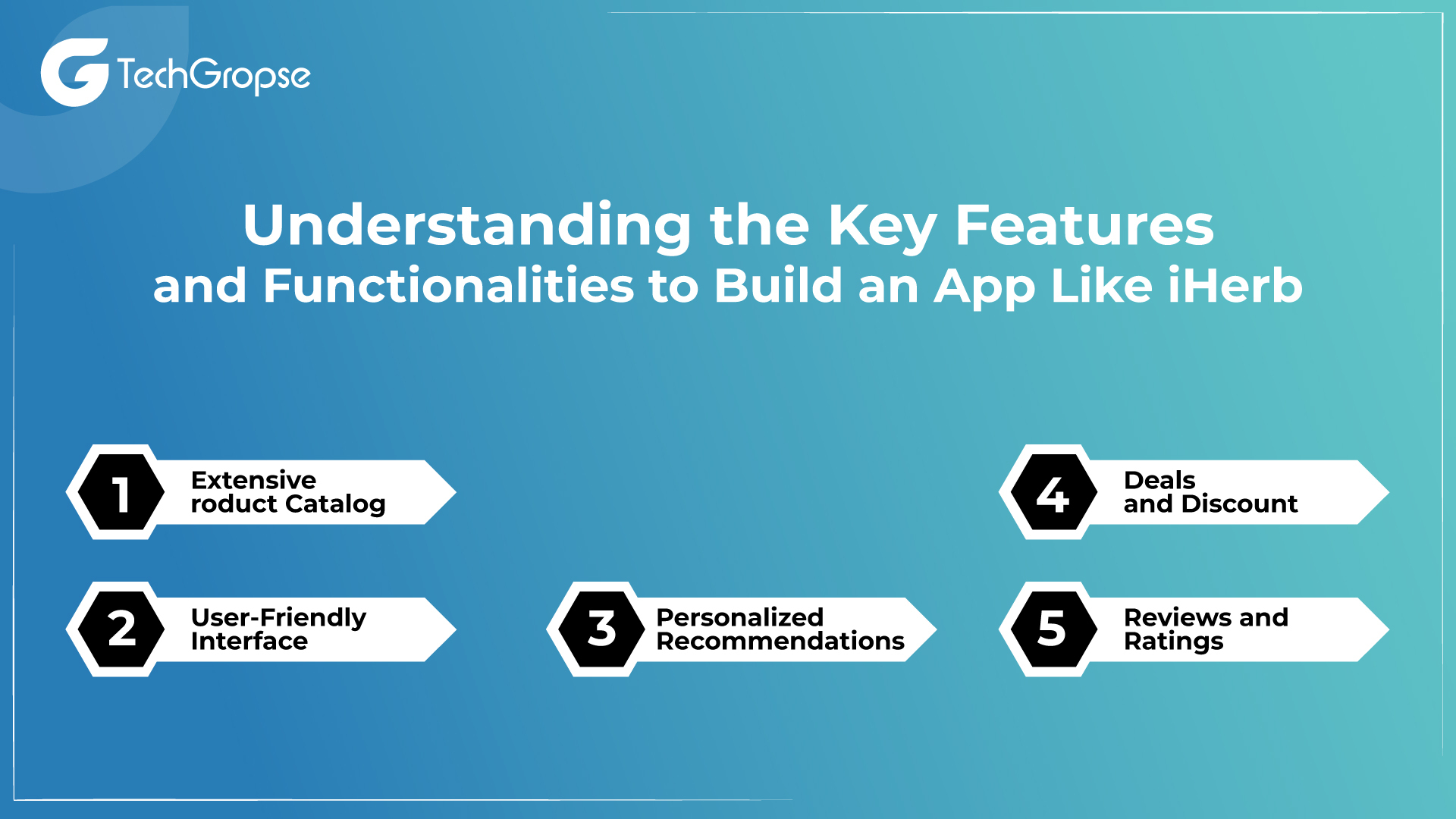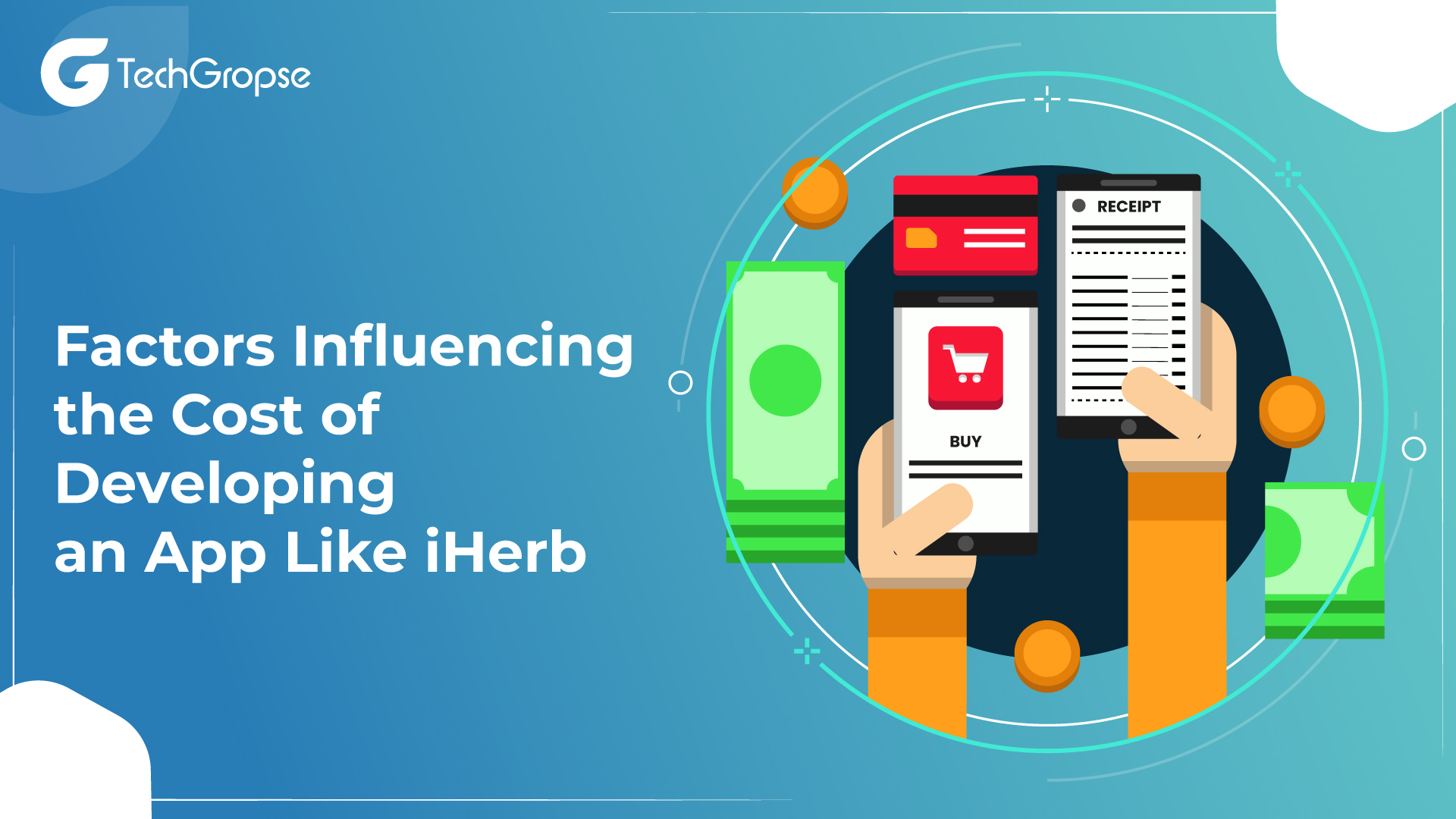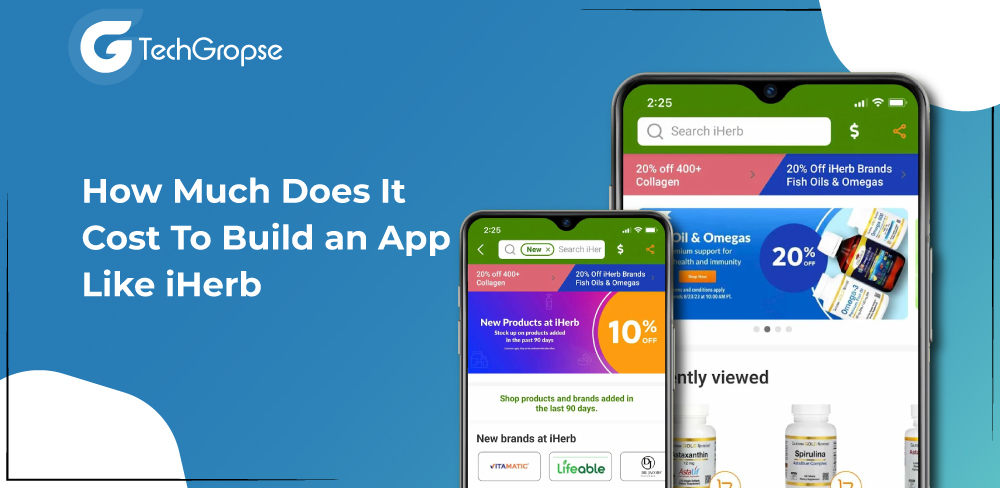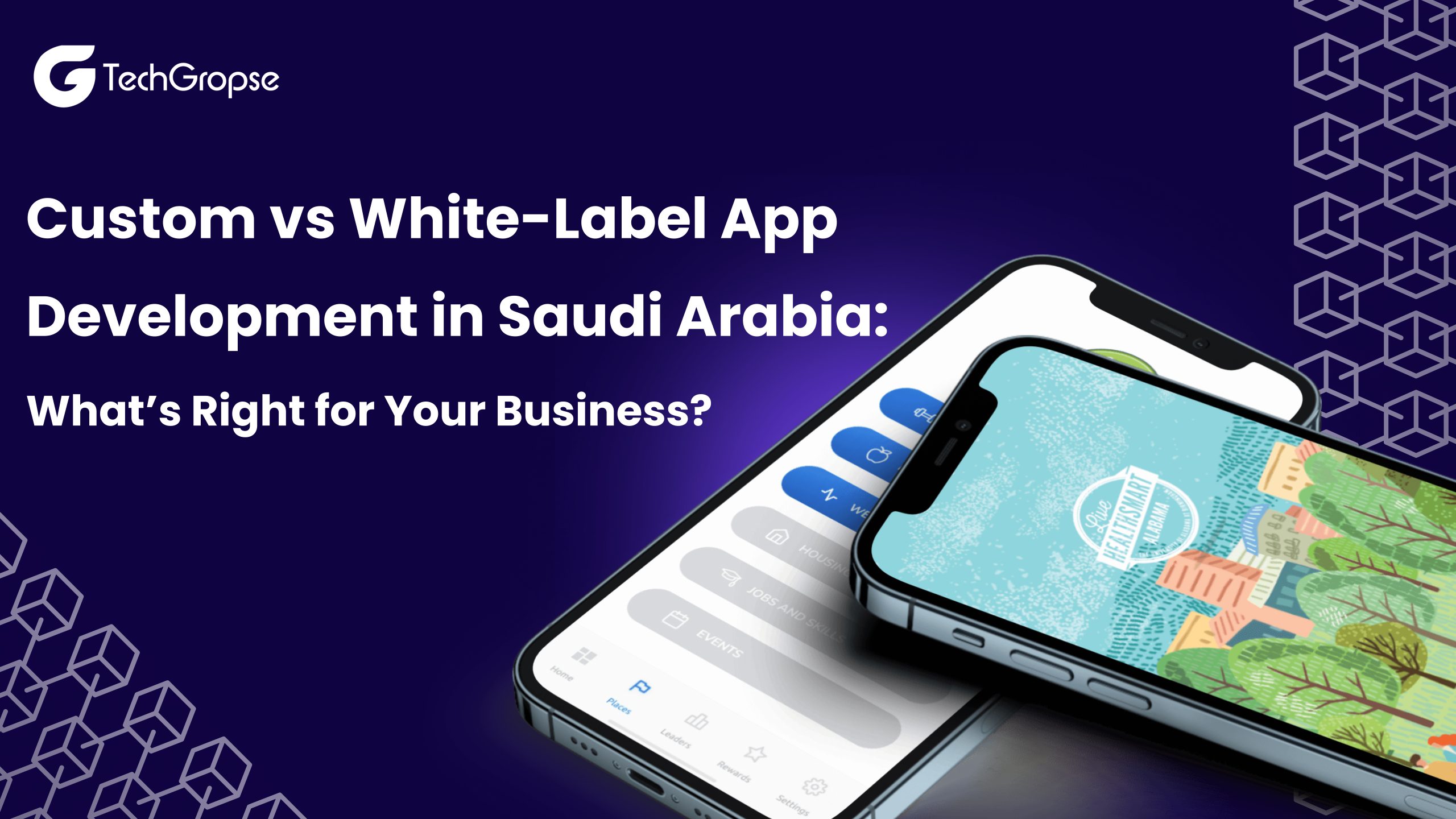Do you want to build an app like iHerb? well, as entrepreneurs and businesses looking to move into the e-commerce industry, building an app like iHerb presents a great opportunity.
As we are aware the world is becoming digital, and businesses are recognizing the importance of a strong online presence.
iHerb app development offers a seamless user experience with a various product catalog, secure transactions, and personalized recommendations.
In this post, we will explore the key features of iHerb, factors influencing to build an app like iHerb, and analyze the estimated costs.
The Rise of Mobile Apps in the E-commerce Industry
In today’s world, on demand app development company have become an essential part of the e-commerce industry. With the increasing popularity of smartphones and the convenience they offer, customers now prefer to make purchases through mobile apps.
This trend has prompted many businesses to build their apps, providing a smooth and personalized shopping experience to their customers.
Overview of iHerb and its Success Story
iHerb, a leading online retailer in the health and wellness industry, is an excellent example of a successful mobile app.
Founded in 1996, iHerb has achieved a huge customer base worldwide by offering a massive range of natural products at competitive prices.
Their user-friendly app allows customers to browse through thousands of products, make purchases, read reviews, and efficiently track their orders.
The app’s success can be attributed to its robust features, reflexive design, and commitment to customer satisfaction.
Understanding the Key Features and Functionalities to Build an App Like iHerb

If you start to build an app like iHerb you must hire dedicated developers to include the key features and functionalities.
iHerb, a prominent online health and wellness retailer, has carved its niche by offering a user-friendly platform with amazing features.
Let’s delve into the core elements that define the success of iHerb:
- Extensive Product Catalog: iHerb offers a vast catalog of health and wellness products. From vitamins and supplements to beauty and grocery items, users can discover various collections of options, ensuring a one-stop-shop experience.
- User-Friendly Interface: The app’s interface is reflexive and user-friendly. Navigating through various categories, searching for products, and completing purchases are seamless processes, improving the overall user experience.
- Personalized Recommendations: iHerb employs sophisticated algorithms to provide personalized product recommendations based on user preferences and previous purchases.
- Deals and Discounts: The app regularly features exclusive deals and discounts, making it an attractive destination for cost-conscious consumers. Highlighting ongoing promotions and limited-time offers keeps users engaged and incentivizes purchases.
- Reviews and Ratings: User-generated content, such as product reviews and ratings, plays a pivotal role. It helps build trust among users and assists them in making informed decisions. Integrating a robust review system can be instrumental for similar apps.
Must Include Advance Features to Build an App Like iHerb
These key features can serve as a blueprint to build an app like iHerb in the health and wellness retail space.
iHerb app development company incorporates similar functionalities and prioritizing user experience, you can build an app like iHerb that connects with your target audience.
- Secure Checkout Process: A secure and efficient checkout process is paramount. iHerb ensures that users can easily complete transactions, incorporating multiple payment options and a streamlined checkout process for a hassle-free experience.
- Order Tracking and Notifications: Keeping users informed about their orders is a priority. iHerb provides real-time order tracking and notifications, allowing users to monitor the status of their purchases and receive timely updates.
- Multi-Language Support: To bring a global audience, iHerb offers multi-language support. This feature improves accessibility and ensures that users from various regions can access the app comfortably.
- Loyalty Program: Encouraging customer loyalty is key. iHerb’s loyalty program rewards users for their purchases, encouraging repeat business. Consider implementing a similar program to foster customer retention.
- Responsive Customer Support: Prompt and responsive customer support is essential. iHerb’s commitment to addressing customer queries and concerns contributes to a positive customer experience.
How You Can Build an App Like iHerb?

So are you ready to build an app like iHerb? You can hire mobile app developers to include several steps, from conceptualization to development and launch.
Here’s a simplified guide to help you get started:
Step 1. Market Research
– Determine the target audience and their requirements.
– Analyze competitors like iHerb to understand market trends.
– Define unique selling points for your app.
Step 2. Conceptualization
– Outline the core features of your app.
– Decide on the product categories you want to offer.
– Plan a user-friendly interface and user experience.
Step 3. Business Model
– Choose a revenue model (e.g., direct sales, subscription, ads).
– Decide on partnerships with suppliers or manufacturers.
Step 4. Legal Considerations
– Register your business and trademark.
– Comply with health and safety regulations for selling wellness products.
Step 5. Development
– Choose a development platform (iOS, Android, or cross-platform).
– Hire Android app developers team or use app development tools.
– Develop a secure and scalable backend system for inventory management, user data, and transactions.
Step 6. Features
– User Registration and Profiles
– Product Catalog with Search and Filters
– Shopping Cart and Checkout
– Secure Payment Gateway Integration
– Order Tracking
– Ratings and Reviews
– Push Notifications
– Loyalty Program
Step 7. Design
– Create a clean and outstanding user interface.
– Ensure mobile responsiveness.
– Focus on a visually appealing design that reflects your brand.
Step 8. Testing
– Perform thorough testing for security, functionality, and usability.
– Fix any issues or bugs that occur during testing.
Step 9. Launch
– Publish your app on the App Store and Google Play.
– Implement a marketing strategy to promote your app.
Step 10. Marketing
– Utilize digital marketing channels (email, social media, SEO).
– Consider influencer marketing in the health and wellness niche.
– Offer promotions and discounts to attract initial users.
Step 11. Feedback and Improvement
– Gather user feedback through reviews and surveys.
– Continue to update your app with unique features and modifications.
Step 12. Customer Support
– Provide customer support through various channels (email, chat, phone).
– Address user issues promptly and professionally.
How Much Does It Cost to Build an App Like iHerb?
If you are considering entering the market to build an app like iHerb, you are wondering about the mobile app development cost.
Building a robust and feature-rich app demands a comprehensive understanding of the factors that contribute to its overall expense.
| Development Phase | Cost Range | Details |
| 1. Planning and Research | $1,000 – $5,000 | Market research, competitor analysis, and initial concept planning. |
| 2. Design | $5,000 – $20,000 | UI/UX design, wireframing, and prototyping. |
| 3. Frontend Development | $15,000 – $50,000 | Implementing the user interface, navigation, and visual elements. |
| 4. Backend Development | $20,000 – $80,000 | Building the server, database, and application logic. |
| 5. Features and Functionality | $15,000 – $40,000 | Implementing core features like product catalog, search, personalized recommendations, etc. |
| 6. Testing and Quality Assurance | $10,000 – $25,000 | Thorough testing, bug fixing, and ensuring a seamless user experience. |
| 7. Deployment and Launch | $5,000 – $15,000 | App deployment, initial marketing, and promotional activities. |
| 8. Maintenance and Updates | $10,000 – $30,000 per year | Ongoing updates, bug fixes, and server maintenance post-launch. |
*Please note that iHerb app development cost can vary based on various factors such as the complexity of features, development team rates, and geographical location.
Factors Influencing the Cost of Developing an App Like iHerb

When it comes to build an app like iHerb multiple factors influence the overall Android app development cost. Well, understanding these elements is important for an accurate budget.
Let’s explore the key factors that play an important role in determining the cost to build an app like iHerb:
1. Feature Set and Complexity
The complexity of features directly correlates with development costs. The more complex and advanced the features the higher the development expenses.
2. Platform (iOS, Android, Both)
Choosing the platform(s) for your app impacts costs. Developing for both iOS and Android typically incurs higher expenses compared to opting for a single platform initially.
3. Design Complexity
The level of sophistication in the app’s UI/UX design influences costs. A visually appealing and user-friendly design may require more time and resources.
4. Development Approach (Native, Hybrid, or Cross-Platform)
When it comes to build an app like iHerb, choosing between native and hybrid app development, it’s like deciding between a gourmet burger and a fast-food burger.
Native apps are like gourmet burgers – they are built for a particular platform (iOS or Android) and offer a seamless user experience.
You can use cross-platform development frameworks like React Native or Flutter to build an app that works on multiple platforms.
5. Selecting the Appropriate Technology Stack
Choosing the right technology stack is crucial for the success of your app. It is like picking the perfect ingredients for a recipe. You need to consider factors like security, scalability, and compatibility.
| Component | Technology |
| Frontend Framework | React Native (for cross-platform) |
| Swift (for iOS) | |
| Kotlin (for Android) | |
| Backend Framework | Node.js |
| Database | MongoDB (for flexibility) |
| PostgreSQL (for relational data) | |
| Server | Express.js (for Node.js) |
| Authentication | Firebase Authentication |
| JSON Web Token (JWT) | |
| Payment Gateway | Stripe |
| Push Notifications | Firebase Cloud Messaging (FCM) |
| Real-time Features | WebSocket (for real-time updates) |
| Cloud Storage | Amazon S3 (for scalability) |
| Analytics | Google Analytics |
| Testing Frameworks | Jest (for unit testing) |
| Detox (for end-to-end testing) | |
| Version Control | Git |
| Deployment | Docker |
| Kubernetes (for container orchestration) | |
| Continuous Integration/Continuous Deployment (CI/CD) | Jenkins |
| Monitoring and Logging | ELK Stack (Elasticsearch, Logstash, Kibana) |
| Security | SSL/TLS Encryption |
| OWASP (Open Web Application Security Project) Guidelines |
Additional Factors Influencing the Cost of Developing an App Like iHerb
With the help of these factors, you can build a more accurate and complete budget for creating an app like iHerb. It also ensures a successful and sustainable project.
1. Third-Party Integrations
If your app integrates with external services (payment gateways, APIs, etc.), the complexity of integration can impact costs. Some integration may need extra development efforts.
2. Security Measures
Ensuring the security of user data is crucial. If you implement security features it may increase development costs.
3. Testing and Quality Assurance
Thorough testing is vital for a seamless user experience. Investing in comprehensive testing processes may add to the overall cost but contribute to a bug-free application.
4. Scalability Requirements
Consideration for future scalability needs affects costs. Building a scalable architecture from the outset can save expenses in the long run as the app grows.
5. Project Timeline
The timeframe for development is a critical factor. Rushed timelines may require more resources and thus incur higher costs. A well-paced project allows for efficient use of resources.
6. Development Team Location and Expertise
Building an app is a team effort, much like putting together a band that rocks. You need talented individuals who can code, design, and collaborate seamlessly.
Look for developers with experience in app development, preferably those who have worked on similar projects.
Designers should have an eye for user experience, while project managers keep the ship on course.
Don’t be afraid to interview potential team members and ask for their portfolios or references.
7. Post-Launch Maintenance
Regular maintenance and updates are like oil changes for your app’s engine. They ensure that your app continues to function smoothly, remains secure, and adapts to evolving user expectations.
Bug fixes, security patches, and feature upgrades are all part of the maintenance game. Keeping your app in top shape not only improves user experience but also helps you stay on top of the competition.
8. Legal and Compliance Requirements
Complying with legal standards and regulations incurs costs. Ensure your app aligns with data protection laws, accessibility standards, and industry regulations.
Popular 7 iherb.com Alternatives & Competitors
When looking for alternatives to iHerb, several reputable online health and wellness retailers provide similar offerings.
Here are the top 7 alternatives and competitors to iHerb.com:
1. Amazon Health & Personal Care
- Overview: Amazon’s Health & Personal Care section is a comprehensive platform offering a wide collection of health and wellness products.
- Strengths: Extensive product range, competitive prices, and a trusted e-commerce platform.
- Considerations: While not exclusively focused on health and wellness, Amazon’s diverse marketplace includes many options.
2. Vitacost
- Overview: Vitacost specializes in health products, supplements, and organic grocery items.
- Strengths: A broad selection of health-conscious products, often at discounted prices.
- Considerations: Limited international shipping options compared to iHerb.
3. Swanson Health
- Overview: Swanson Health is known for its natural health products and supplements.
- Strengths: High-quality products, frequent discounts, and a loyalty program for customers.
- Considerations: Smaller product range compared to larger platforms.
4. LuckyVitamin
- Overview: LuckyVitamin offers a diverse range of health and wellness products, including vitamins, supplements, and beauty items.
- Strengths: Regular promotions, wellness-focused blog content, and a user-friendly interface.
- Considerations: Some users note occasional shipping delays.
5. Thrive Market
- Overview: Thrive Market is an online marketplace focusing on organic, non-GMO, and sustainable products.
- Strengths: Membership-based platform offering discounted prices, with an emphasis on conscious consumerism.
- Considerations: Requires a membership fee.
6. Jet
- Overview: Jet, now part of Walmart, offers a wide range of products, including health and wellness items.
- Strengths: Competitive pricing, a vast product catalog, and the convenience of a major e-commerce platform.
- Considerations: Health products may be a smaller segment compared to other categories.
7. iOffer
- Overview: iOffer is an online marketplace that features a variety of products, including health and beauty items.
- Strengths: Allows for negotiation on prices, providing potential cost savings.
- Considerations: Varies in product quality and reliability compared to dedicated health retailers.
Conclusion and Key Takeaways
As we discussed above, developing an app like iHerb can be quite challenging and costly, but with careful planning and consideration, it can be a rewarding investment.
You can make the right decisions to understand the key features and functionalities of iHerb. Select the correct development approach, create a skilled team, and manage ongoing maintenance to build an app like iHerb.
To build an app like iHerbWith you should follow unique planning and a focus on amazing customer experience, which can excite and deliver substantial benefits for both businesses and consumers.
FAQ: How Much Does It Cost To Build an App Like iHerb
1. How much does it cost to build an app like iHerb?
The cost to build an app like iHerb can depend on some factors like the complexity of features, design needs, development approach, and the expertise of the development team.
2. What are the key features that should be included to build an app like iHerb?
To build an app like iHerb you should include core features such as user registration and login, product browsing and search functionality, shopping cart, and checkout process, secure payment integration, order tracking, customer reviews, and personalized recommendations.
3. Is it better to develop a native or hybrid app for an iHerb-like application?
Well, the choice between hybrid apps and native development depends on various factors like your target audience, budget, and desired performance. Native apps provide a better user experience and performance but require development for various platforms.
4. How can ongoing maintenance and updates be managed for an iHerb-like app?
Ongoing maintenance and regular updates are important to ensure the app remains secure, functional, and up-to-date. It can be handled by selecting a dedicated maintenance team or outsourcing to a reliable iHerb app development company.










